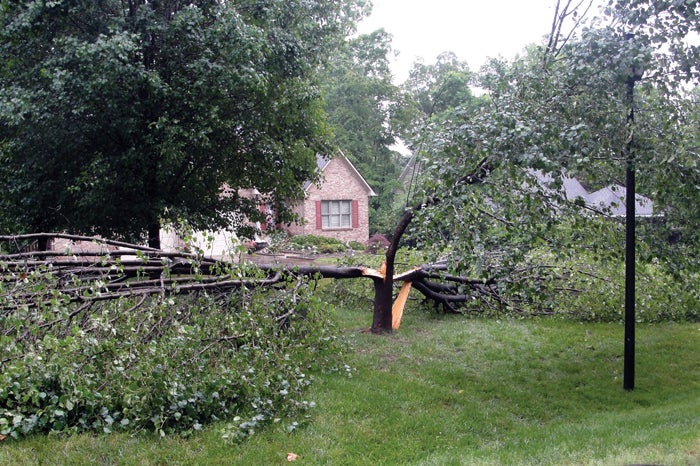Darrell Blackwelder column: Trees to avoid
Published 12:00 am Sunday, March 7, 2021

- Split Bradford pear
Without a doubt, trees are a coveted aspect of our landscape. They provide shade, flowers, fall color, food for wildlife, barriers and design concepts. But certain tree species can be a royal pain as a friend of mine and I were discussing the other morning at breakfast. So, a word of caution and apology — you may be offended by my thoughts on trees to avoid in your landscape. Sorry, but below is a list of trees with rationale to avoid in the landscape.
Bradford pear — poor growth habits causing trees to easily spilt, insect and disease problems, short lived, produces invasive plants
Sweetgum — gum balls in late summer are terrible
Paper bark birch — constant limbs and twigs everywhere, early leaf drop in late summer, no fall color
Silver maple — fast growing, short lived, summer insects, no fall color
Pecan — constant falling brittle limbs, inconsistent crop, no fall color
Purple leaf plum — short lived, no fall color, disease and insect problems
Chinese chestnut—thorny fruit, no fall color, unattractive
Bamboo — not really a tree, highly invasive, difficult to impossible to kill
Honey locust — pods are problem, no color, thorns
Boxelder — short lived, no color, attracts boxelder bugs in spring which are a royal pain
Leyland cypress — short lived, insect and disease problems, over planted
Mimosa — short lived, no fall color, poor structure
Female ginkgo — female tree has extremely foul-smelling fruit in fall, very slow growing
Fraser fir — Christmas tree, slow growing, disease problems, mountain species
White pine — short lived, insect and disease prone, mountain species
Walnut — fruit is problem, walnut stains, allelopathic, i.e., will not let plants grow underneath this tree.
Darrell Blackwelder is the retired horticulture agent and director with the North Carolina Cooperative Extension Service in Rowan County. Contact him at deblackw@ncsu.edu .



